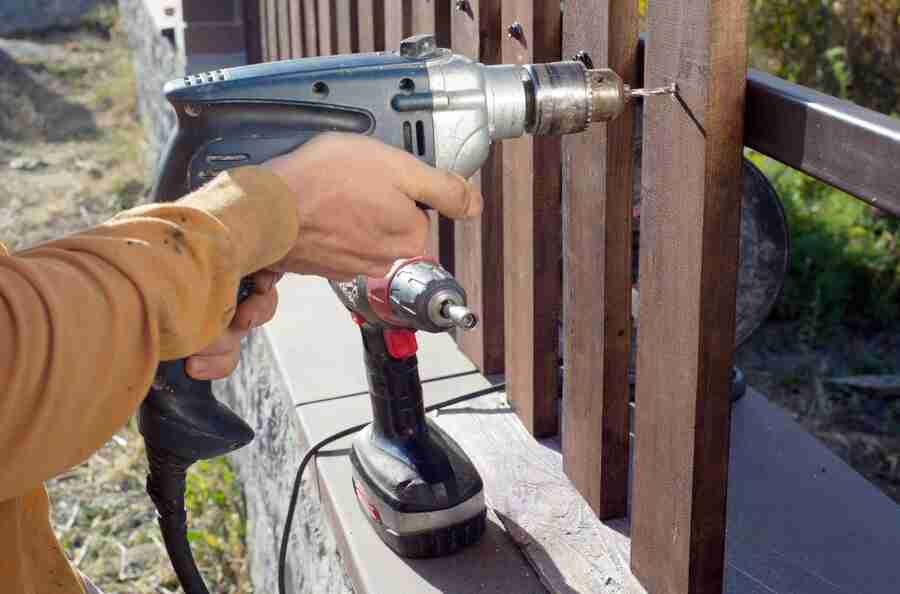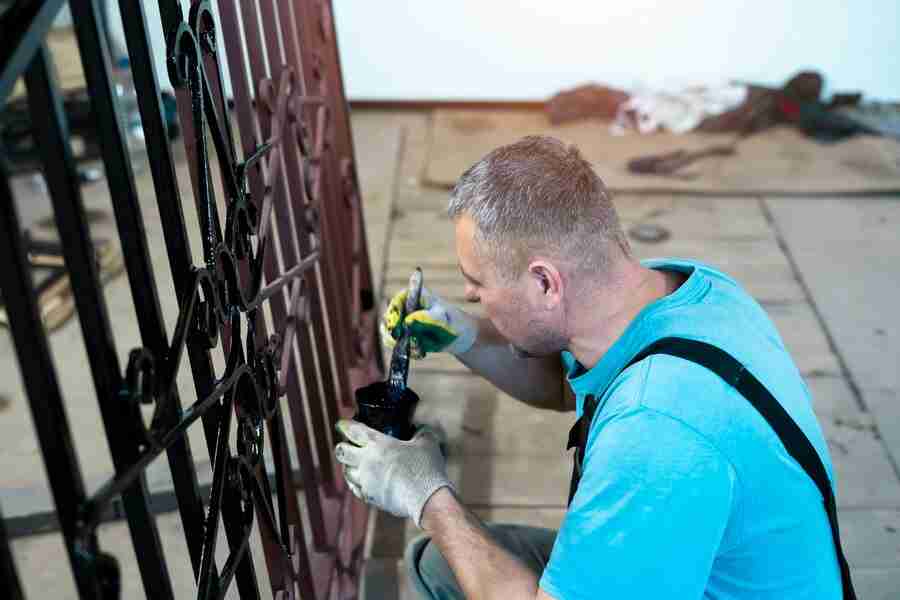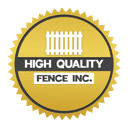
Maintaining a sturdy and well-functioning fence is essential for both aesthetic appeal and security. However, even the most durable fences are susceptible to wear and tear over time. From rotting wood to leaning posts, various issues can arise, compromising the integrity and effectiveness of your fence. In this comprehensive guide, we delve into “Fence Repair 101: Addressing Common Issues,” offering practical solutions to tackle prevalent problems encountered by homeowners and property managers.
Whether you’re dealing with broken panels, sagging gates, or encroaching vegetation, understanding the root causes and appropriate repair techniques is crucial. Our exploration encompasses a range of materials and fence types, from traditional wooden picket fences to modern vinyl and metal installations. By familiarizing yourself with these common issues and their remedies, you can prolong the lifespan of your fence and enhance the overall appeal and functionality of your outdoor space.
Identifying Signs of Damage
Recognizing the early signs of fence damage is crucial for maintaining the integrity of your property’s perimeter. Whether it’s noticing cracked or splintered wood, detecting rust spots on metal components, observing leaning sections, or identifying loose hardware such as screws or nails, these indications should not be overlooked. Furthermore, discoloration, warping, or gaps between panels can signify underlying issues that require attention.
Engaging in regular visual inspections enables you to catch these warning signs before they escalate into more significant problems, ultimately saving you valuable time, effort, and resources in the long run. By staying vigilant and proactive in your maintenance approach, you can ensure that your fence remains sturdy, secure, and aesthetically pleasing for years to come.
Repairing Rotting Wood
Rotting wood is a common issue affecting wooden fences, often stemming from prolonged exposure to moisture and fungal growth. To effectively address rot, begin by meticulously removing the affected areas using a chisel or saw, ensuring all compromised wood is thoroughly extracted. Afterward, treat the remaining wood with a specialized wood preservative to thwart future decay.
Depending on the extent of the damage, you might find it necessary to replace entire sections of the fence or reinforce weakened areas using wood filler or epoxy for added structural support. Additionally, applying a fresh coat of sealant or paint serves a dual purpose: it not only restores the fence’s visual appeal but also creates a protective barrier against moisture infiltration, further safeguarding against future rotting issues.
Fixing Leaning or Loose Posts
Leaning or loose posts pose a significant threat to the structural integrity of any fence, potentially leading to further instability if not promptly addressed. To rectify this issue effectively, begin by excavating the soil surrounding the base of the affected post, thereby exposing its foundation. With the foundation revealed, assess whether realignment and stabilization can be achieved by introducing additional soil or gravel for reinforcement. In cases where the post is irreparably damaged, replacement becomes imperative.
Ensure that the new post is meticulously aligned and securely anchored into the ground, utilizing concrete for enhanced stability. By undertaking these measures diligently, you not only rectify the immediate issue but also safeguard against future occurrences of leaning or loosening. Consistent inspections and maintenance of post connections are essential practices to uphold, fortifying the fence’s stability and longevity in the long run.
Patching Holes and Tears in Panels
Holes and tears in fence panels not only compromise privacy and security but also detract from the fence’s aesthetic appeal. Repairing these damages is relatively straightforward, depending on the material of the fence. For wooden fences, use wood filler to patch small holes and tears, sanding the area smooth once the filler has dried.
For larger holes or extensive damage, consider replacing the affected panels entirely. Similarly, vinyl and metal fences can be repaired with specialized patch kits designed for each material. Apply the patch according to the manufacturer’s instructions, ensuring a tight seal to prevent moisture ingress and further deterioration. Regularly inspecting and addressing any damage promptly will help maintain the fence’s integrity and prolong its lifespan.
Realigning Misaligned Gates
Misaligned gates not only detract from the overall appearance of the fence but also pose functionality issues. Common causes of misalignment include shifting soil, loose hinges, or warping of the gate itself. Begin by inspecting the hinges and hardware for any signs of damage or wear, tightening screws or replacing components as needed.
If the gate is dragging or sagging, adjust the hinges to realign it with the fence posts. For wooden gates, shaving or sanding may be necessary to ensure a proper fit. Additionally, installing a gate brace or tension rod can provide added support and prevent future misalignment. Regular lubrication of hinges and periodic adjustments will help keep the gate functioning smoothly and aligned properly with the fence.
Dealing with Rust and Corrosion on Metal Fences
Rust and corrosion are common issues that plague metal fences, especially those made from iron or steel. To address rust, start by scrubbing the affected areas with a wire brush to remove loose rust particles and debris. Next, apply a rust converter solution to neutralize any remaining rust and prevent further corrosion.
Once the converter has dried, apply a rust-inhibiting primer followed by a coat of rust-resistant paint to protect the metal surface. Regularly inspecting metal fences for signs of rust and corrosion and promptly addressing them with appropriate treatments will help prolong the fence’s lifespan and maintain its appearance.

Addressing Damage from Pest Infestations
Pest infestations can wreak havoc on fences, particularly wooden ones, as pests such as termites, carpenter ants, and wood-boring beetles feed on the wood, causing structural damage. To address pest infestations, start by identifying the type of pest and the extent of the damage. Depending on the severity, treatment options may include applying pesticides, insecticides, or wood preservatives to eradicate pests and prevent further infestation.
Additionally, implementing preventive measures such as regular inspections, maintaining proper drainage, and keeping vegetation trimmed away from the fence can help deter pests and minimize the risk of future infestations. Regularly monitoring for signs of pest activity and taking proactive measures will help protect the integrity of the fence and prevent costly repairs.
Preventing Damage from Vegetation Overgrowth
Vegetation overgrowth can pose significant challenges to fences, leading to damage such as warping, cracking, and even structural instability. To prevent damage from vegetation, establish a clear boundary between the fence and surrounding plants by regularly trimming back any overhanging branches, vines, or bushes.
Additionally, consider installing a barrier such as a weed fabric or gravel strip along the base of the fence to inhibit plant growth and reduce the risk of moisture retention, which can accelerate decay. Regularly inspecting the perimeter of the fence and promptly removing any encroaching vegetation will help maintain its integrity and prolong its lifespan.
Reinforcing Weak or Wobbly Sections
Weak or wobbly sections of a fence can compromise its stability and pose safety hazards. To reinforce these areas, start by identifying the source of the weakness, whether it’s loose connections, deteriorated materials, or inadequate support.
Depending on the severity of the issue, reinforcement options may include adding additional support posts, bracing existing sections, or replacing damaged components. Securely fasten loose hardware and tighten connections to ensure a firm and stable structure. Regularly inspecting the fence for signs of weakness and reinforcing vulnerable areas as needed will help maintain its stability and prevent potential collapses or further damage.
Enhancing Fence Stability with Proper Maintenance
Proper maintenance is essential for ensuring the long-term stability and functionality of your fence. Start by regularly inspecting the fence for signs of damage, wear, or deterioration. Address any issues promptly, whether it’s repairing damage, tightening loose hardware, or applying protective treatments to prevent decay or rust.
Additionally, keep the fence clean by removing dirt, debris, and vegetation buildup, as these can trap moisture and accelerate deterioration. Depending on the material of your fence, perform routine maintenance tasks such as sealing, painting, staining, or lubricating moving parts to enhance durability and weather resistance. By implementing a proactive maintenance routine and addressing issues promptly, you can extend the lifespan of your fence and ensure it continues to serve its purpose effectively for years to come.
Maintaining a sturdy and well-functioning fence requires diligence and proactive care. By identifying and addressing common issues such as rotting wood, leaning posts, and rust accumulation promptly, you can prolong the lifespan of your fence and ensure its continued stability and functionality. Regular inspections, proper maintenance, and timely repairs are key to preserving the integrity and aesthetic appeal of your fence over time. Remember to also take preventive measures to deter pest infestations and vegetation overgrowth, further safeguarding your investment.
If you’re in need of professional assistance or high-quality materials for your fence repair or maintenance needs, don’t hesitate to contact High Quality Fence. Our team of experts is dedicated to providing top-notch service and products to ensure the longevity and durability of your fence. Call us today at 209-815-9015 or email us at info@highqualityfence.com to schedule a consultation or inquire about our services. Let us help you keep your fence in optimal condition for years to come.


